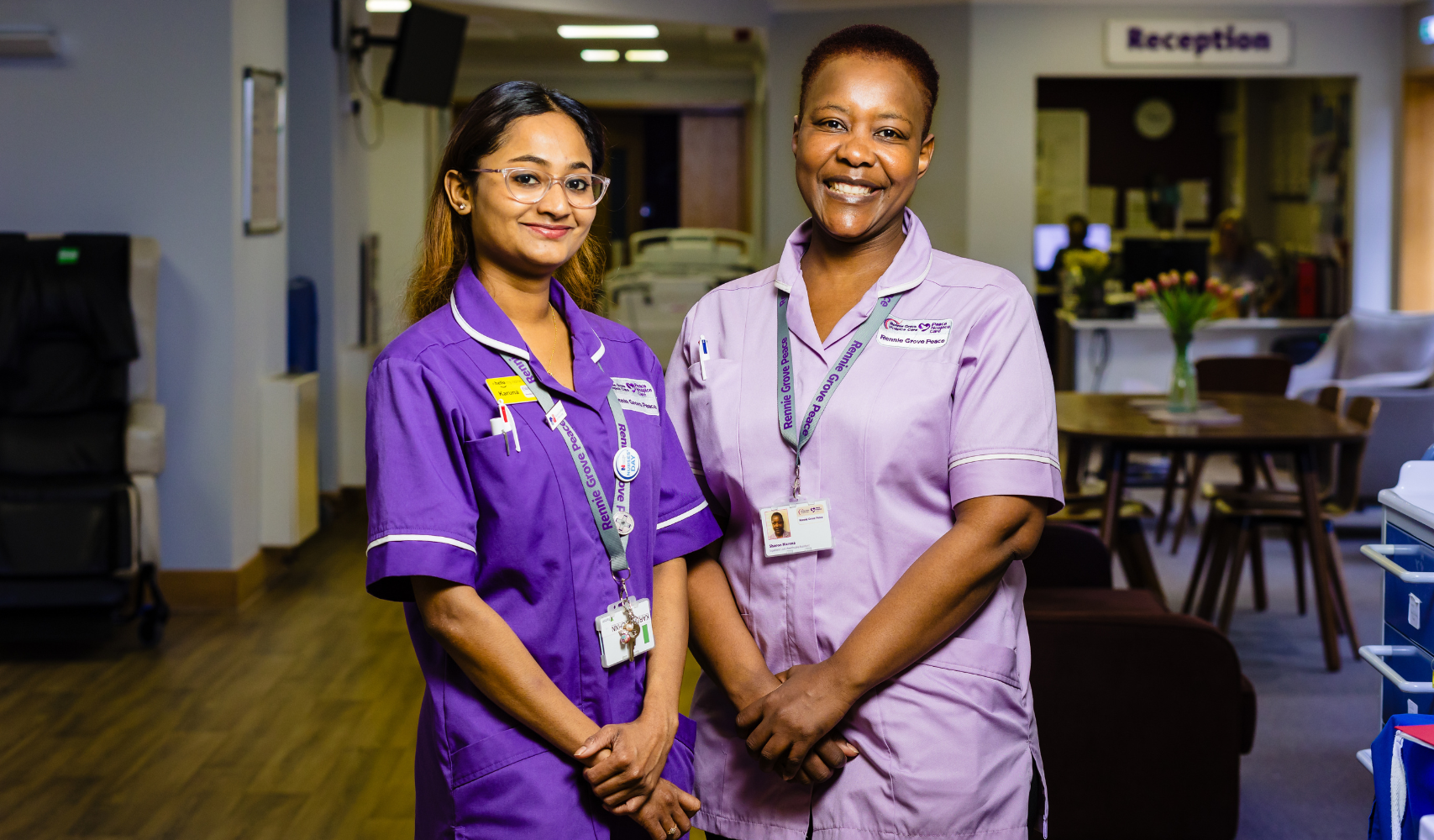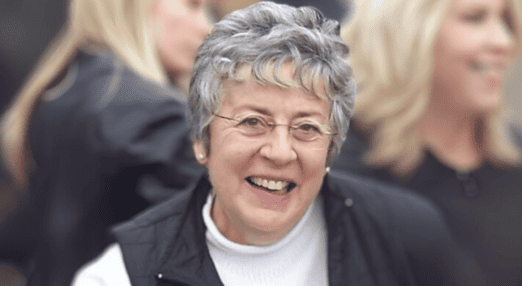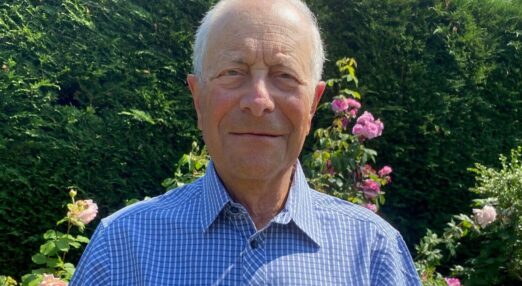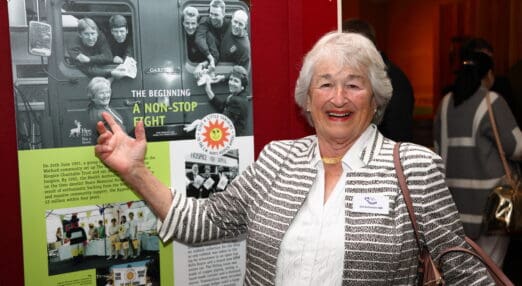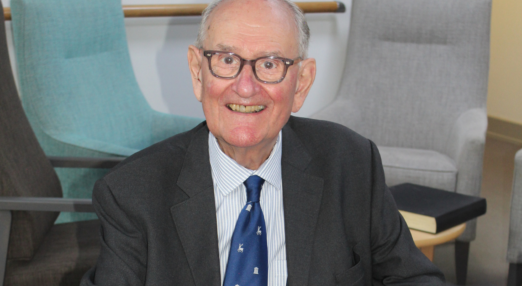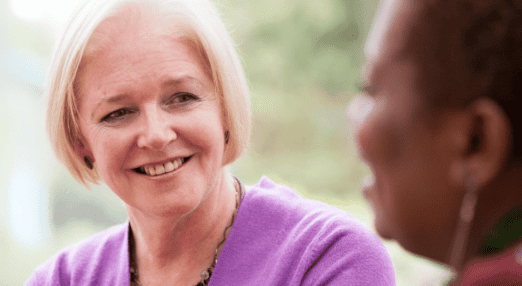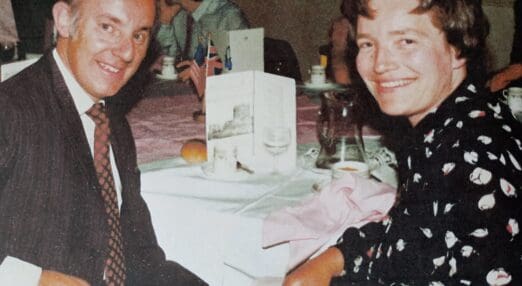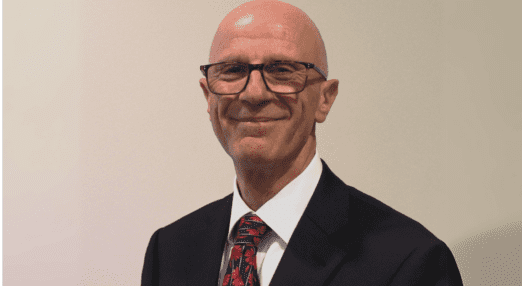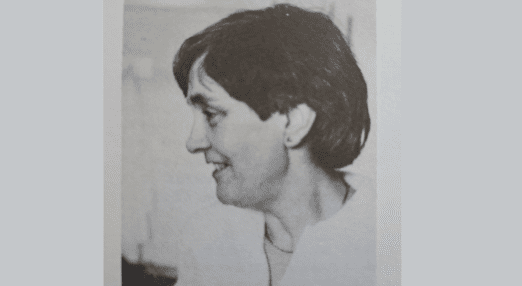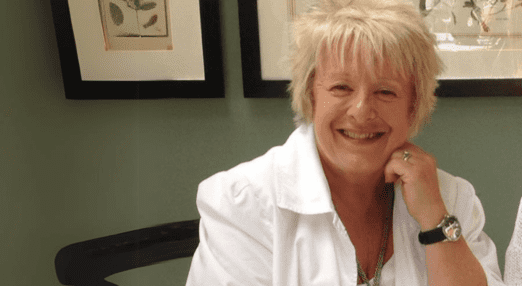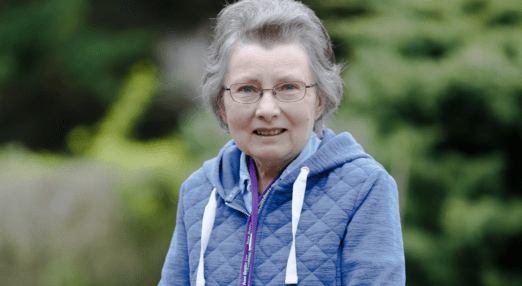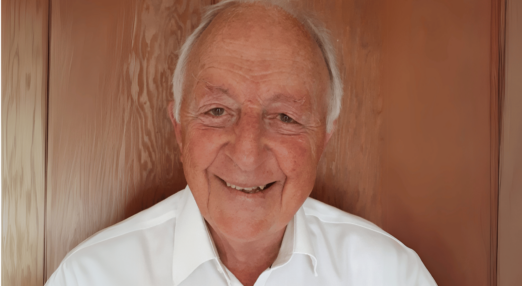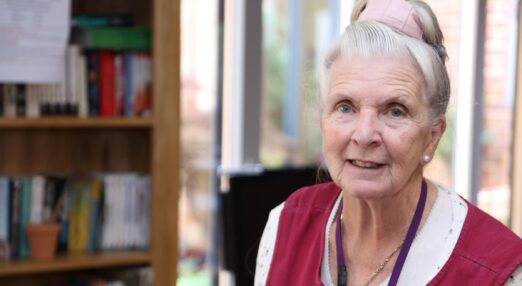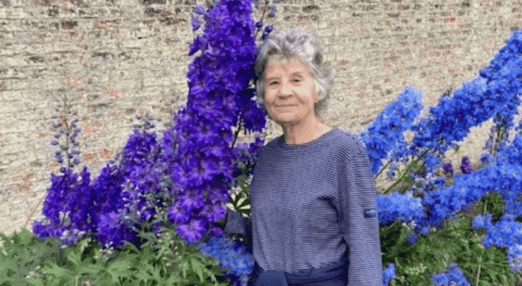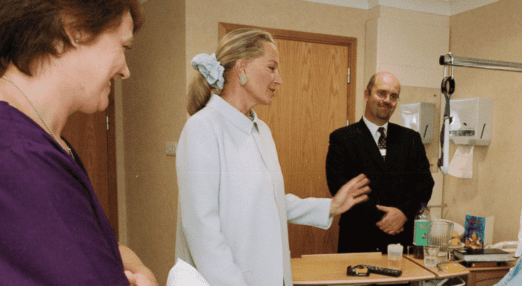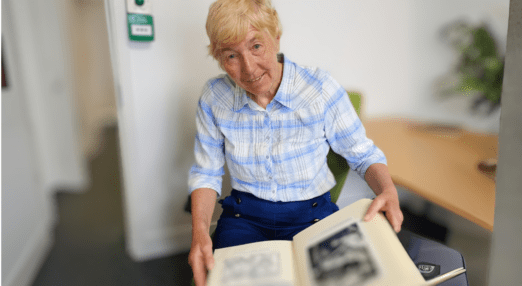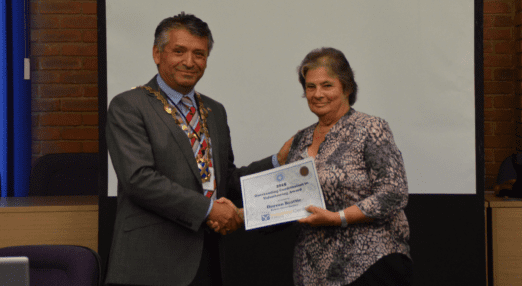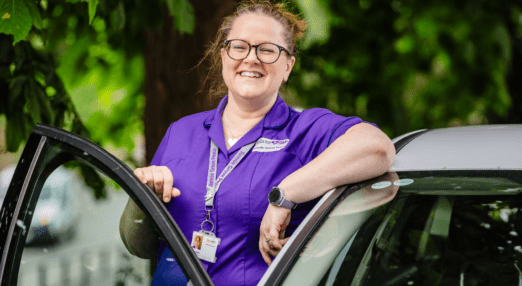Birth of modern hospice care
Dame Cicely Saunders is credited as the pioneer of modern hospice care. From a wealthy and religious background, she trained as a doctor, nurse and medical social worker.
Cicely was inspired by her involvement in the care of soldiers after WW2 whilst working in a hospital as a volunteer. During her time there, she provided care for David Tasma, a 40-year-old Polish-Jewish refugee. David had terminal cancer and was suffering from what Cicely would later describe as ‘total pain’ which included psychological, social, emotional and spiritual distress as well as the physical sensations of illness.
David spent the last months of his life in a busy surgical ward because there wasn’t anywhere else for him to go. Cicely would sit and read to him and told him about her ambition to build a dedicated facility for the dying. When he died, he left her £500 (around £19,000 today) ‘to be a window in your home’.
When St Christopher’s Hospice in Sydenham opened in 1967, a large, plain glass window was dedicated to David with a small brass plaque.
St Christopher’s Hospice was the first hospice to provide expert pain and symptom control, compassionate care, teaching and clinical research.

“You matter because you are you, and you matter to the last moment of your life.”
History of Rennie Grove Peace Hospice
Fast forward to the 1980s saw little change by the medical profession in the care and treatment of the dying. They were still being treated in busy impersonal wards and staff were not given training to fulfil the needs of the terminally ill and dying.
The 80s was a time for change and growth in hospice care because the provision in hospitals was inadequate.
This common need led to the establishment of three local hospices in Hertfordshire and Buckinghamshire in the mid to late 1980s; Grove House, Ian Rennie Hospice at Home and Peace Hospice.
A selection of images from our archives:
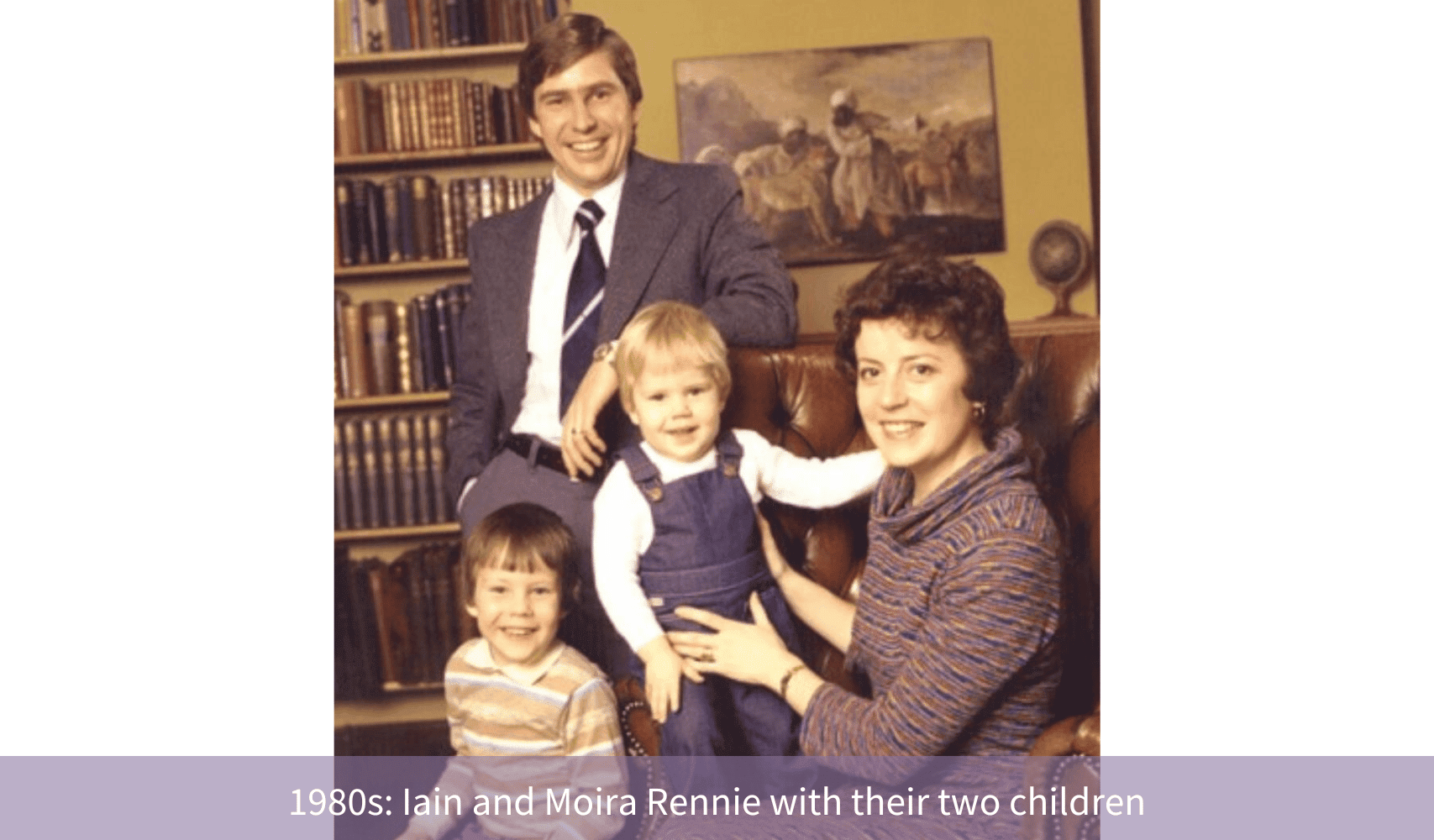
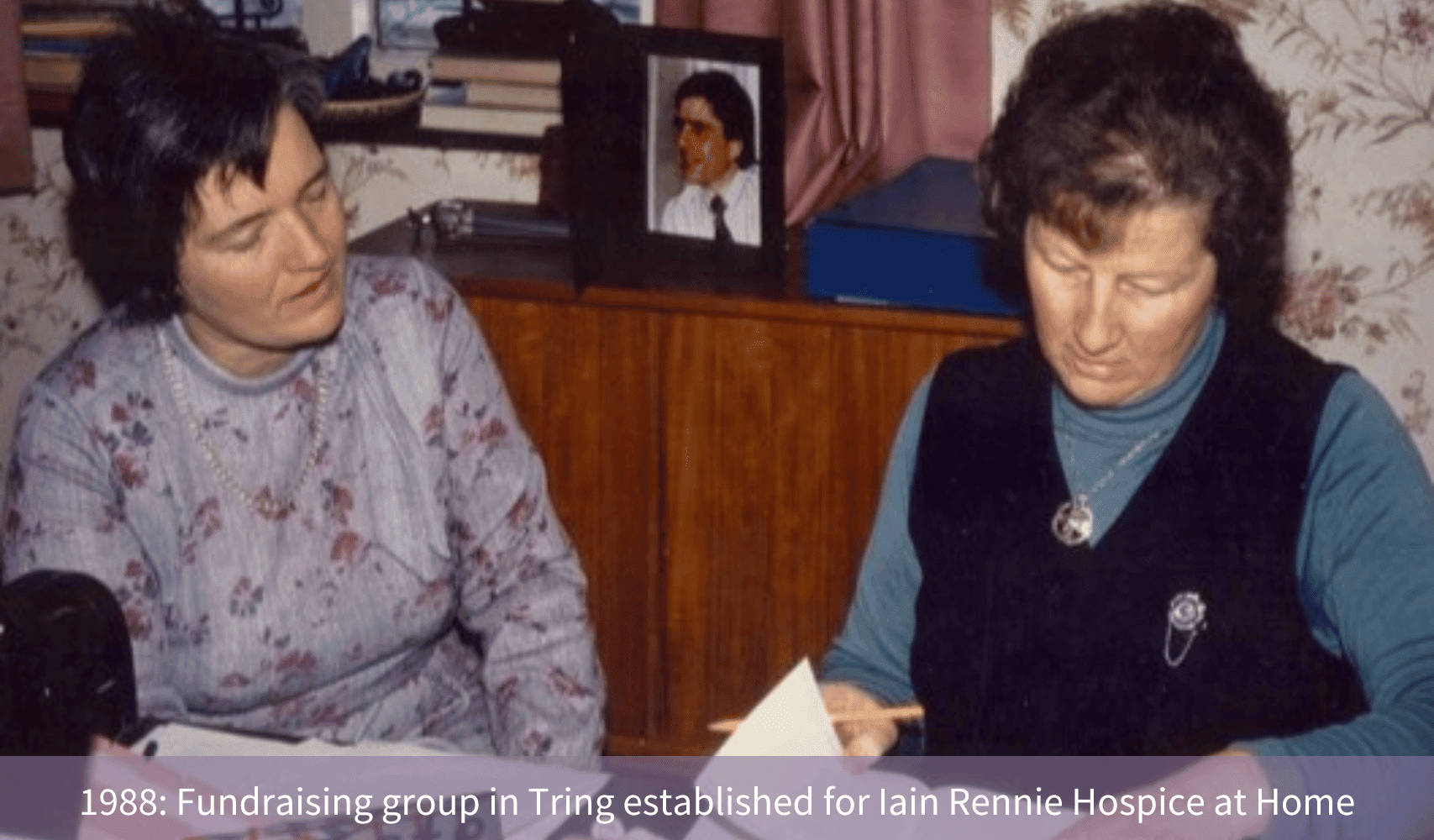
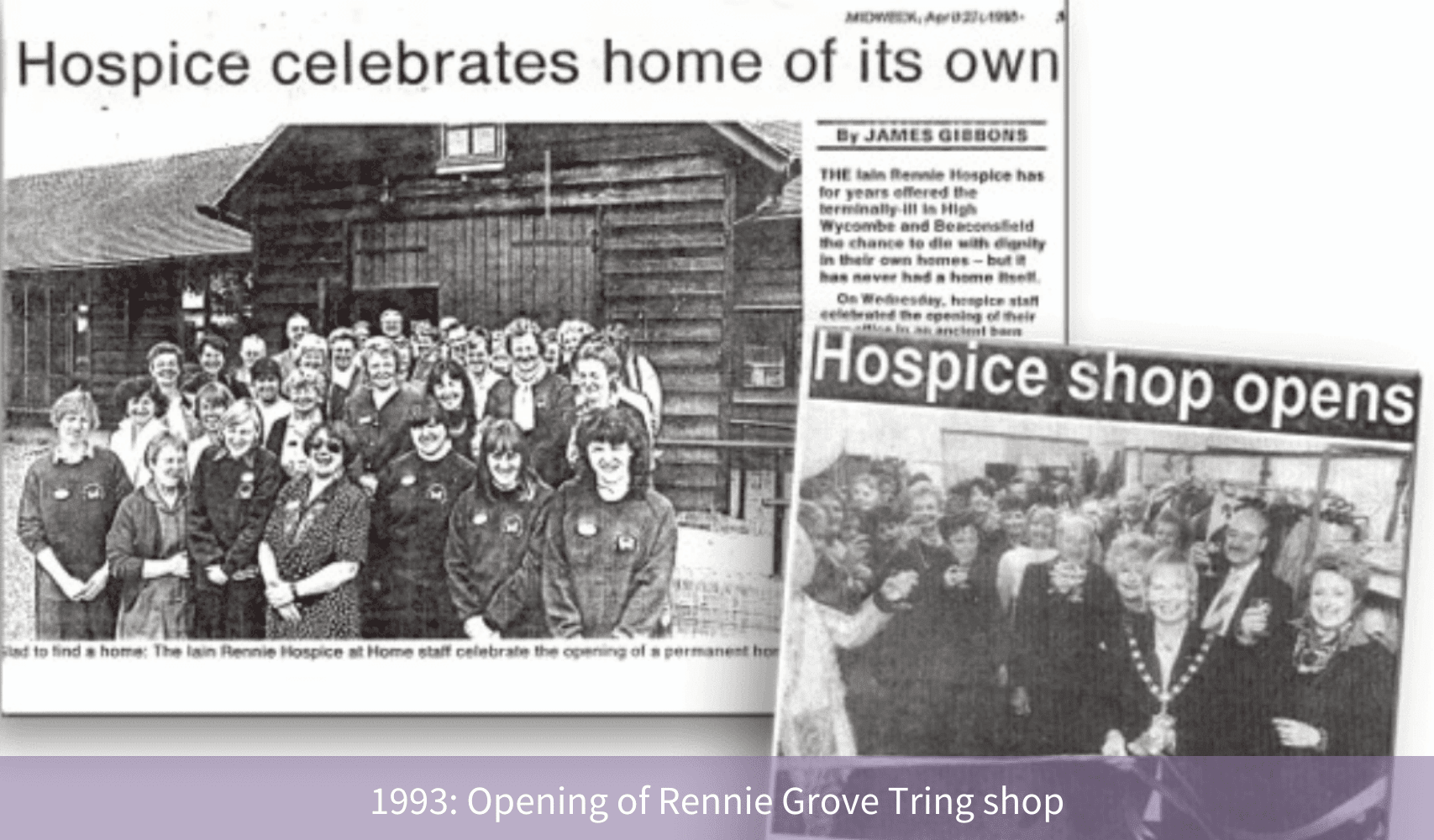









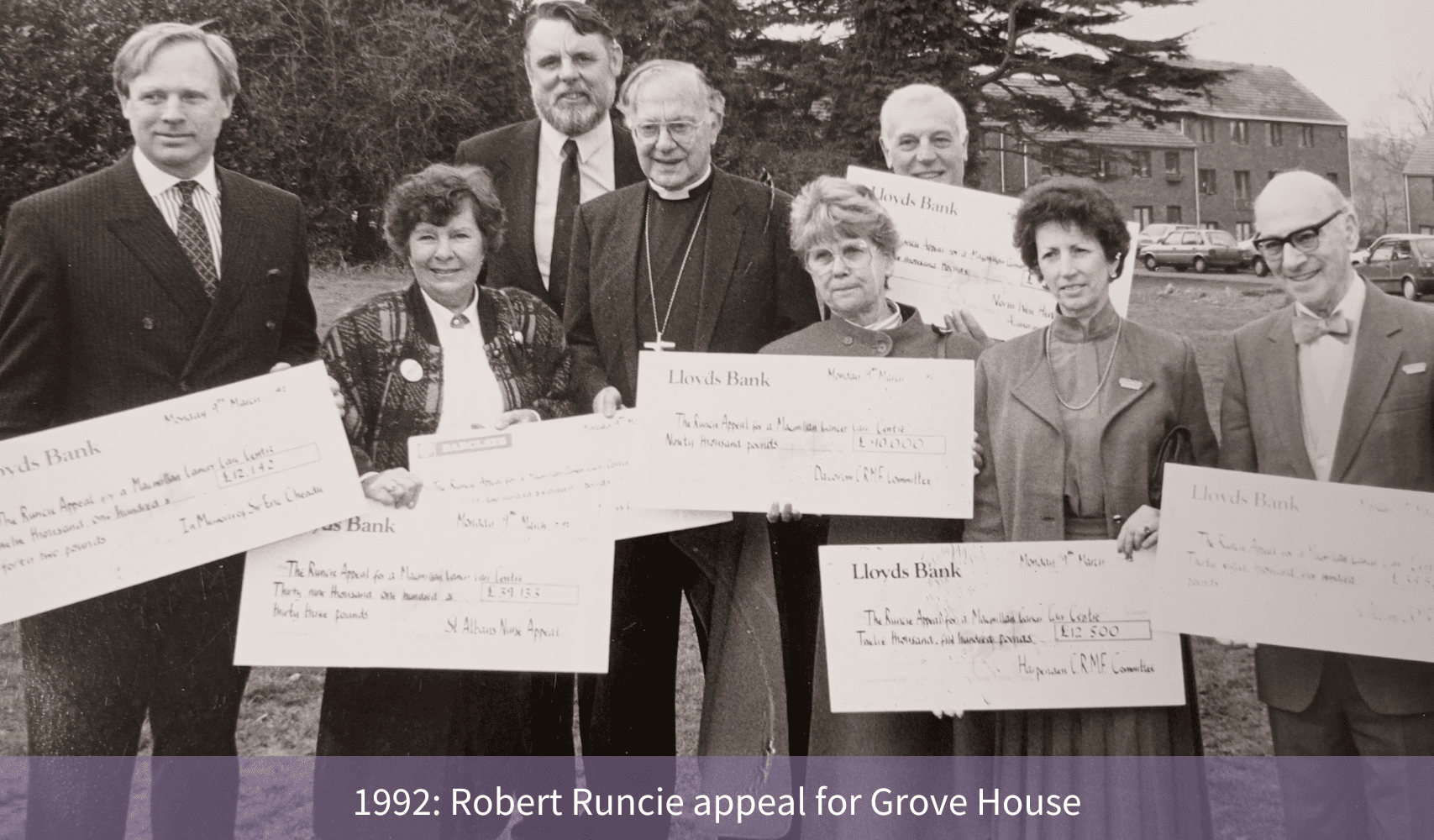
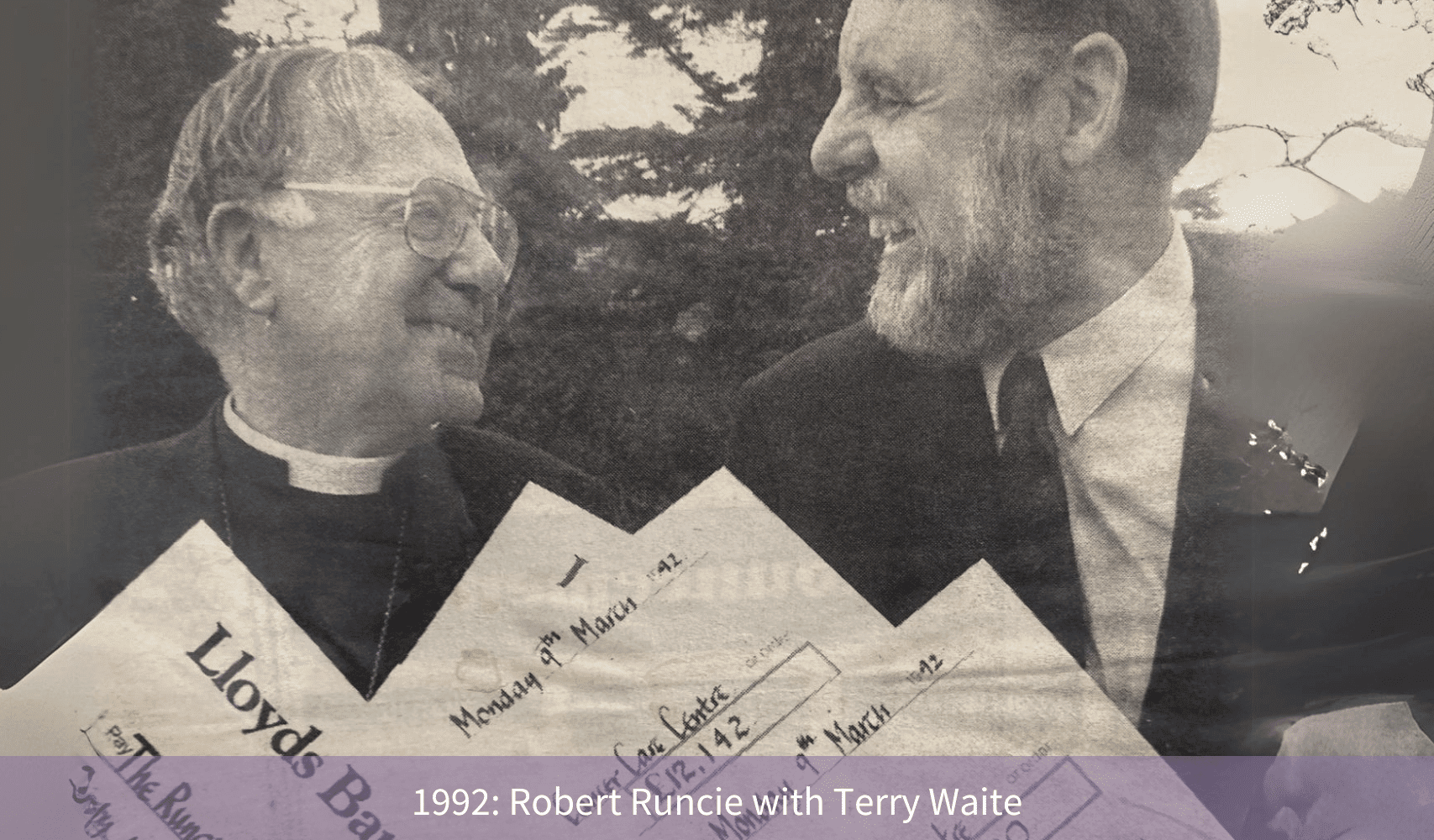




Key milestones in the evolution of Rennie Grove Peace
1982: St Albans and City District Hospice Care Team established, led by Dr Mary Groves
Dr Mary Groves, a new GP in St Albans, was deeply affected whilst looking after a young mother the same age as her with terminal bowel cancer. With deepening concerns about the “woefully inadequate care” available to patients and their families, Dr Groves helped to establish the first St Albans and City District Hospice Care Team.
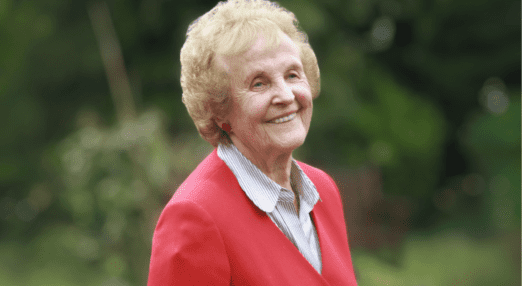
1985: Iain Rennie Hospice at Home established, led by Moira Rennie and five local nurses
The charity was named after its first patient, Iain Rennie. Iain was in his mid-30s and a father to two young boys when he was diagnosed with a brain tumour. Five local nurses* and their family and friends, joined forces and worked with Iain’s GP and wife, Moira, to care for him at home 24-hours a day until he died peacefully at home.
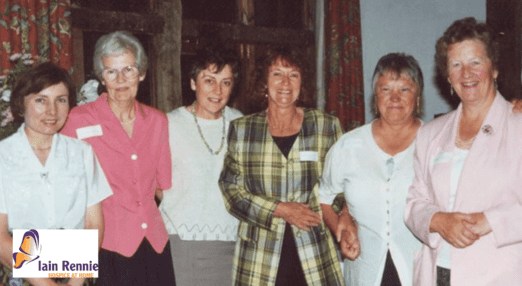
1991: Peace Hospice Appeal established, led by Gill Hollander
Gill Hollander established the Southwest Herts Peace Hospice Appeal which raised almost £2 million in four years. This followed years of campaigning and fundraising in the 1980s to turn Watford’s derelict Peace Memorial Hospital into a hospice following its closure in 1985 (originally built in 1925 in memory of those who fought and died in WW1).
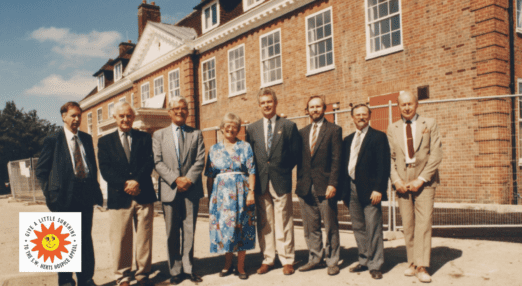
1993: First Iain Rennie Hospice at Home charity shop opens in Tring
Peggy Bainbridge, a long-standing volunteer, began the retail fundraising operation with a market stall in Tring on Fridays. This stall led to the opening of a charity shop in Tring. More shops followed and today our Retail and Trading department boasts 33 shops and an ecommerce presence which raises around £3 million in a typical year.
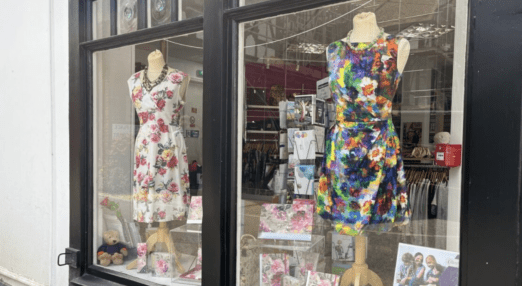
1994: Grove House welcomes patients to its purpose-built hospice in St Albans
After a successful £1m appeal, led by the late Lord Robert Runcie, Grove House was able to build a purpose-built hospice in St Albans. On opening, the building was named the Macmillan Day Hospice - its name was changed a few years later to Grove House.
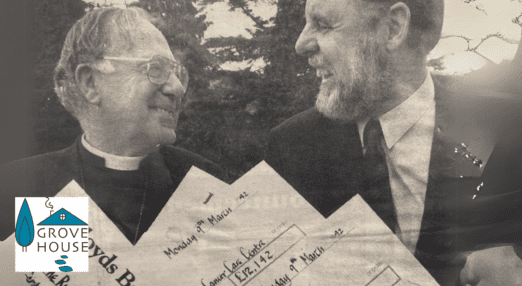
1996: Peace Hospice opens
Following extensive restoration, the main building is reopened as Peace Hospice by HRH Princess Michael of Kent. It incorporates a Day Care Centre and a suite of offices.
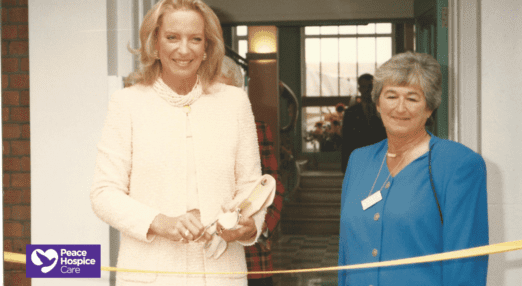
2000: The new Inpatient Unit opens in Watford
HRH Princess Michael of Kent opens the 12 bedded Inpatient Unit which now cares for 170 patients per year.
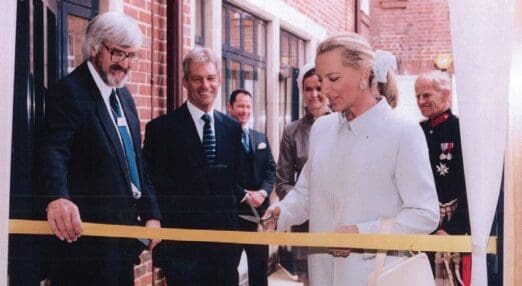
2002: Iain Rennie Hospice at Home opens first office
Iain Rennie Hospice at Home opens its first office in Chalfont St Giles, named Gillian King House.
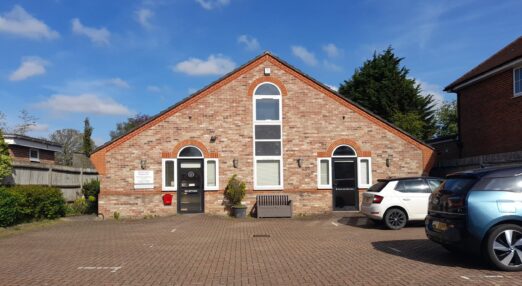
2005: The South West Bereavement Network is formed
Hosted by Peace Hospice and a number of bereavement charities, The South West Bereavement Network is formed in 2005.

2007: eBay is set up for Iain Rennie Hospice at Home
In 2007 Iain Rennie Hospice at Home starts listing items on eBay as another source of income for the hospice.

2011-2013: Merger of Iain Rennie Hospice at Home and Grove House
After years of collaboration, Iain Rennie Hospice at Home and Grove House merge in 2011 and launch as Rennie Grove in 2013.
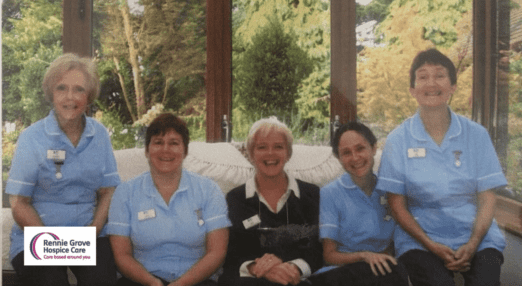
2014: Starlight Centre opens
The Starlight Centre is opened by HRH Princess Michael of Kent and becomes the base for Outpatient and Day services in Watford
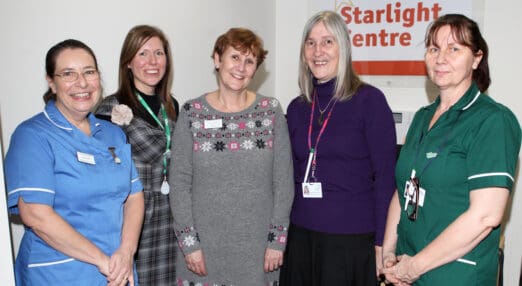
2015: Herts Neighbours is established
This cabinet office social action funded project matched volunteers with people with a life limiting illness, to provide support and companionship. The first step to forming our Compassionate Neighbours service.
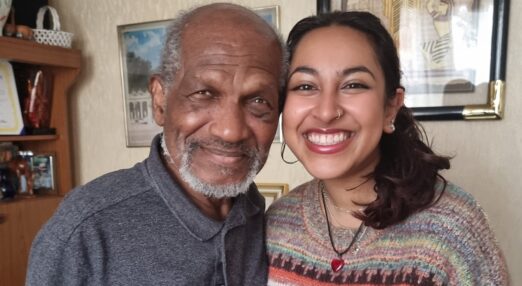
2016: Retail and trading operation grows
Bainbridge House in Berkhamsted, named after Peggy Bainbridge, opens to support Rennie Grove's retail and trading operation.
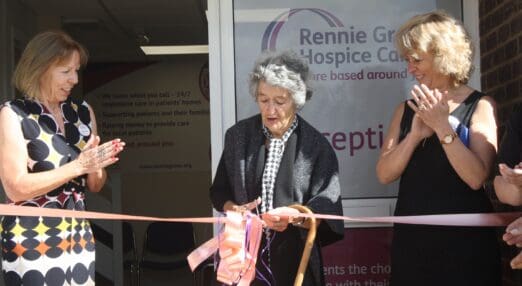
2020: Compassionate Neighbours launches
A continuation of Herts Neighbours, Compassionate Neighbours provides 1:1 support and companionship for local people experiencing illness and loss.
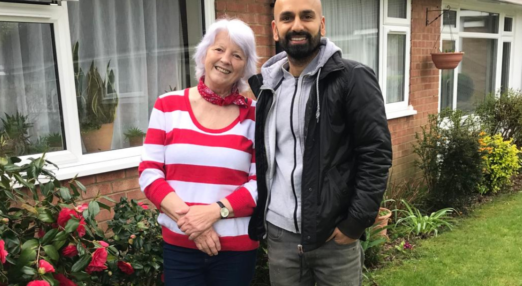
2020: Rapid Personalised Care Service service launches
By providing personal care, such as washing and dressing, for patients in their own homes who are reaching the end of life, this service ensures patients stay comfortable at home during their final weeks.
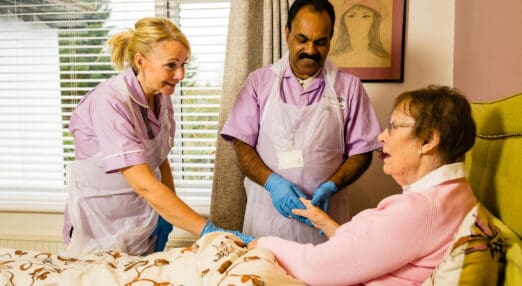
2021: The new-look Grove House opens
By trebling the space available, the refurbishment of Grove House enabled the expansion of a range of services for patients, families, and carers as well as facilities for children and young adults.
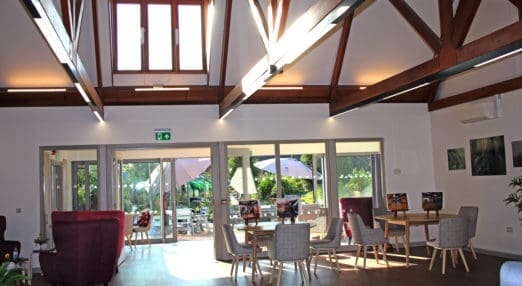
2021: The first Compassionate Café opens
The first Compassionate Café opens in Croxley. The cafe provides a safe space for people who are lonely or grieving to come together, chat and support one another. It proves a great success, and we now have 16 cafés.
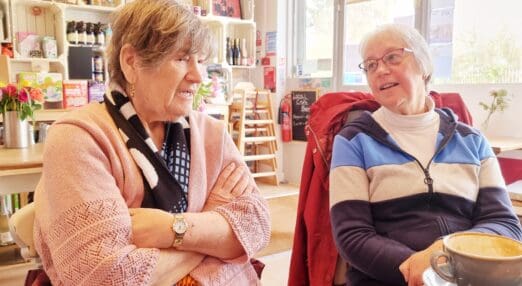
2023: Rennie Grove Peace Hospice Care is formed
Rennie Grove Peace Hospice Care starts formally operating as a newly registered charity. The merger of Peace Hospice with Rennie Grove enables us to support more people, and to ensure every local person receives the care they need, when they need it.
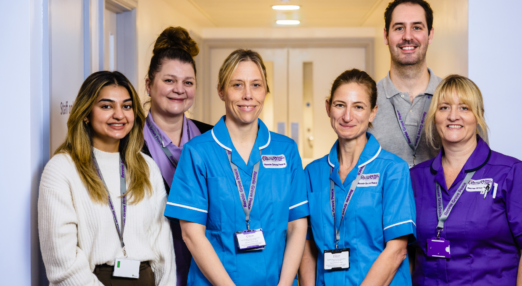
2023: The Coordination Centre starts operating
A single point of contact Coordination Centre, offers one telephone number with direct access to a specialist triage team who can quickly direct anyone in need of support to the team who can provide the care they need.
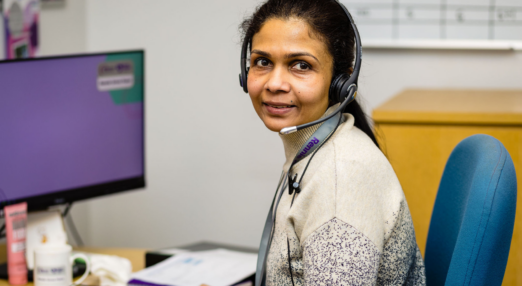
2023: Living Well programme launches
Through practical, specialist and peer support, the 10-week Living Well programme empowers people with the knowledge and support to live well for longer.
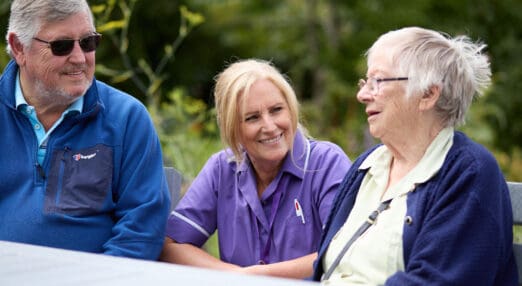
Our heritage stories
Read stories from the individuals who played a key part in making Rennie Grove Peace what it is today.
-

Moira’s story
“It all started with five nurses in our front room who passionately believed in a better way to care for people when they needed it most.”
Read more
-

Mary’s story
“It began with small steps and meetings held by the volunteers in people’s homes.”
Read more
-

Stephen’s story
“It’s just crazy that hospice care is funded by bike rides!”
Read more
-

Gill’s story
Gill helped steer the Peace Hospice through its first crucial years when the Peace Hospice Appeal began in 1991.
Read more
-

Nigel’s story
“I was worried about how we were going to fund it, because it was difficult to secure funds to pay for the running costs - nurses wages, oxygen and operating costs etc. But we did it!”
Read more
-

Joan’s story
“I remember one woman saying to me at the day hospice ‘When I’m here, I’m the person I want to be’. She explained that we saw her as a person and not just as her cancer diagnosis.”
Read more
-

Delia’s story
“I feel I watched a miracle in progress”
Read more
-

Jeremy’s story
“I was one of three GPs who helped look after the patients out-of-hours in the new Inpatient Unit.”
Read more
-

Mary’s story
“We were all volunteers who could see a need for extra care for patients who were very unwell.”
Read more
-

Rowena’s story
“Iain Rennie Hospice at Home is written through me like a stick of rock.”
Read more
-

Maureen’s story
"It was really, really hard work to get the hospice off the ground in the first place, but it was so needed because there was such a lack of provision. We had brilliant camaraderie between the nurses, and you just met the most amazing families and patients.”
Read more
-

Tom’s story
“I am so wedded to the organisation; it is part of my persona.”
Read more
-

Elizabeth’s story
“We had little Irish dancers entertaining everyone, and a singer named Kim Kelly Jo. I was so pleased with the amount of money we raised, but I didn't stop there!”
Read more
-

Lottie’s story
“We ran ‘Tuesday Club’ every week. It was a lovely community and it felt like a family.”
Read more
-

Noel’s story
“We were at the heart of the hospice at home movement. It was a completely untapped way of caring for patients and it felt like we were part of history in the making.”
Read more
-

Audrey’s story
“The Watford community and its people have always been the power behind the hospice, making it what it is today.”
Read more
-

Doreen’s story
“It's an incredible privilege to be the person that someone shares their story with.”
Read more
Ways to support us in our work
Your support is invaluable to us, whether that be donating, volunteering, participating in one of our events or fundraising on our behalf.
-

Volunteering
Make a difference in your local community when you join the Rennie Grove Peace volunteering team
Read more
-

Donate
Help fund specialist care for families within Buckinghamshire and Hertfordshire when you donate to Rennie Grove Peace.
Read more
-

Fundraising events
Get involved in our fundraising events across Herts and Bucks and help make a difference in your local community.
Read more

